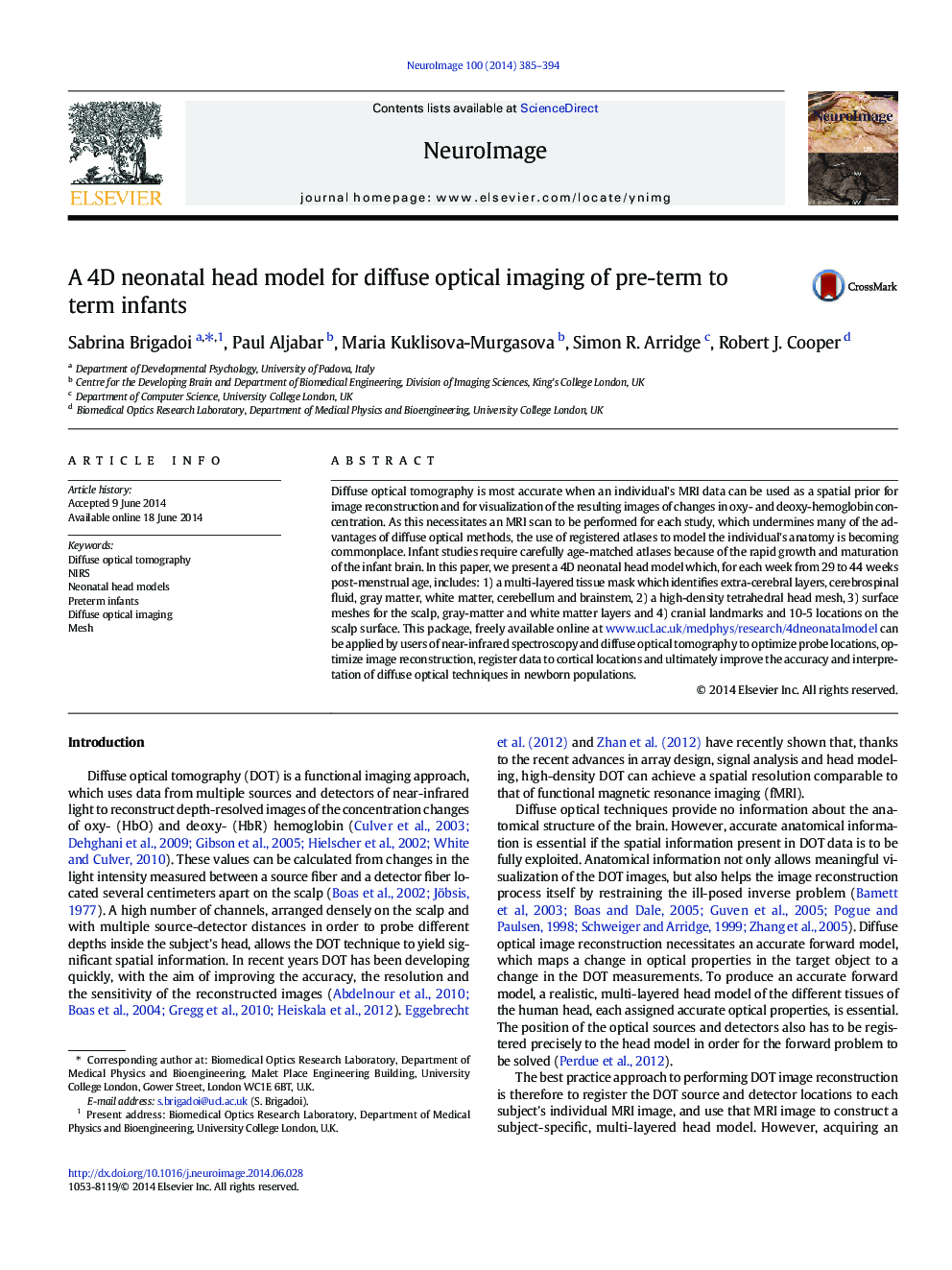| Article ID | Journal | Published Year | Pages | File Type |
|---|---|---|---|---|
| 6026774 | NeuroImage | 2014 | 10 Pages |
â¢A 4D optical head model for preterm to term infants is presented.â¢Multi-layered meshes are provided for 29-44 week PMA neonates.â¢The application of this model will constitute best-practice neonatal DOT.â¢This model will further the applications of DOT to neonatal medicine.
Diffuse optical tomography is most accurate when an individual's MRI data can be used as a spatial prior for image reconstruction and for visualization of the resulting images of changes in oxy- and deoxy-hemoglobin concentration. As this necessitates an MRI scan to be performed for each study, which undermines many of the advantages of diffuse optical methods, the use of registered atlases to model the individual's anatomy is becoming commonplace. Infant studies require carefully age-matched atlases because of the rapid growth and maturation of the infant brain. In this paper, we present a 4D neonatal head model which, for each week from 29 to 44Â weeks post-menstrual age, includes: 1) a multi-layered tissue mask which identifies extra-cerebral layers, cerebrospinal fluid, gray matter, white matter, cerebellum and brainstem, 2) a high-density tetrahedral head mesh, 3) surface meshes for the scalp, gray-matter and white matter layers and 4) cranial landmarks and 10-5 locations on the scalp surface. This package, freely available online at www.ucl.ac.uk/medphys/research/4dneonatalmodel can be applied by users of near-infrared spectroscopy and diffuse optical tomography to optimize probe locations, optimize image reconstruction, register data to cortical locations and ultimately improve the accuracy and interpretation of diffuse optical techniques in newborn populations.
